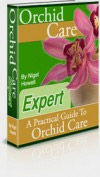For a long time now it’s been the commonly held belief that growing and looking after orchids was complicated or reserved for the wealthy. However, this is far from the truth and with over 25,000 species and considerably more than 100,000 hybrid varieties, it is well within anyone’s ability to find an orchid that will match their budget, lifestyle and horticultural skill level.
Learning about your orchid
The majority of orchids require no more effort to look after than any other garden and indoor plants. Although, there are several orchids that do require special attention. Step one in orchid care should always be to research your plants individual requirements before you can expect to achieve perfect results.
Few plants are as rewarding to look after and as capable of producing such extraordinarily beautiful and delicate blooms. One of many reasons why orchids have become so popular . Learn how to care for your orchid correctly and you can expect it remain as healthy and beautiful as when you first bought it.
There’s a good chance that the orchid you bought or received is a Phaleanopsis, a popular genera or type of orchid, usually white or purple, that is popular because it is easier to look after than a lot of the less common varieties.
Blooming
If you look after it right your orchid can bloom for around three months. If keeping the orchid indoors you should place it close by a window where it will be able to receive sunlight for as long as possible throughout the day, but avoid the harsh midday sun. For this reason, rooms with an east facing window are an excellent position for your orchid.
Natural and Artificial Lighting
If you are short on ideal places to put your orchid you can replace natural sunlight with a fluorescent lamp or grow light. This should be placed about a foot above your orchid’s flowers and you need to be careful to keep its exposure limited to ordinary daylight hours.
Orchids do best in between temperatures of 13 degrees Celsius (55 degrees Fahrenheit) and 27 degrees Celsius (80 degrees Fahrenheit). If the temperature exceeds this then your orchid can begin to loose its buds or may stop flowering altogether.
Keeping the flower moist is also very important but you must make sure not to over water the roots as this can kill your blooms. Aim to water the orchid properly once every two weeks or place it into a water tray to keep the air surrounding it humid, but do not allow the roots to come into contact with the water in the tray or it will constantly be absorbing too much water.
One good tip to remember is to fertilize your orchid before it blooms to help keep your orchid flowering for the maximum amount of time. After it has flowered you no longer need to fertilize it.
One last tip I can give you to maximize the lifespan of your blooms is careful pruning of your orchid whilst it is in bloom, you should then find you get a second set of flowers developing.
With careful attention you will have an orchid that will continue to give you a rich, full bloom throughout the entire season.

